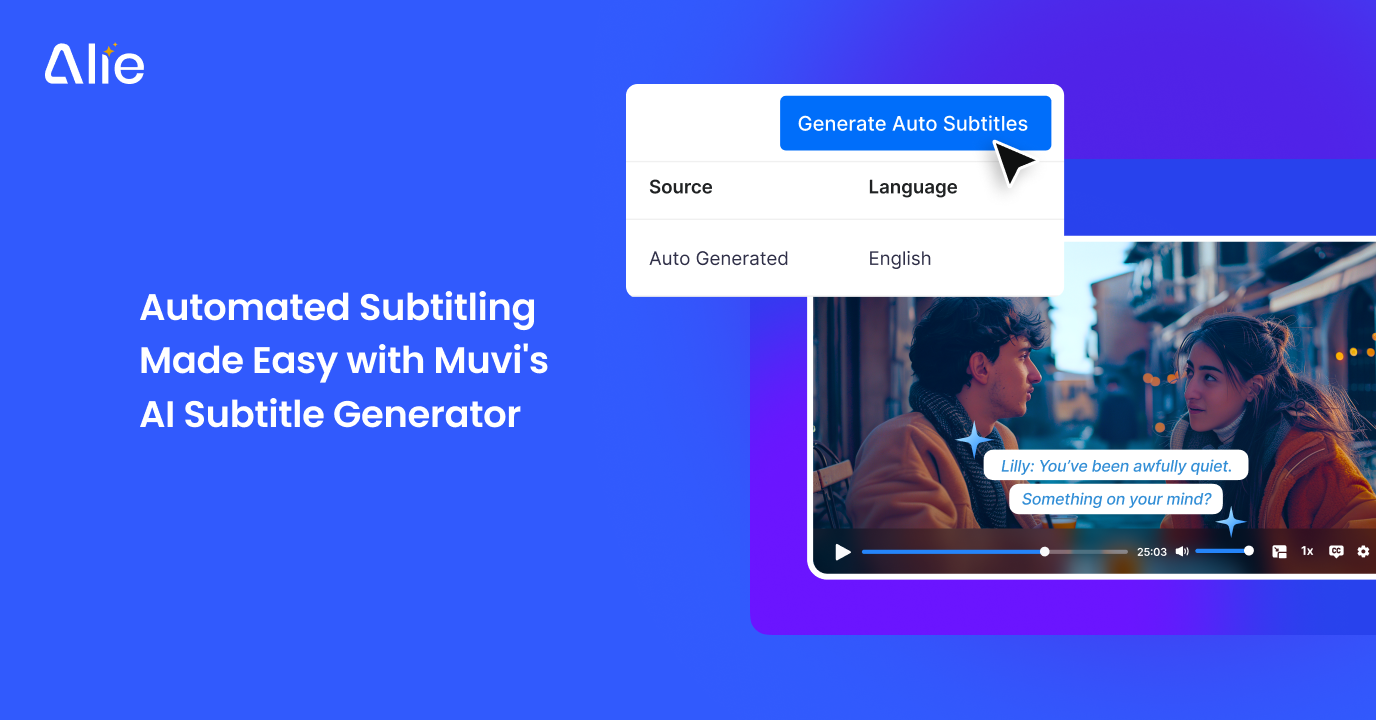In an era dominated by digital content consumption, the efficiency and optimization of video bandwidth stand as one of the key pillars for delivering a seamless and high-quality streaming experience to your viewers.
If you are from the streaming industry, then understanding video bandwidth is a fundamental necessity. A profound grasp of video bandwidth ensures the delivery of high-quality content to diverse audiences. Knowledge of encoding, compression techniques, and adaptive bitrate streaming empowers you to optimize your videos for various devices and network conditions, offering viewers an optimum experience irrespective of their internet speeds.
If you are wondering how and why, then read on. In this guide, we will explore all the details you need to know about video bandwidth, from its foundational principles to the latest advancements in streaming technologies. So, let’s start from the basics before we delve deeper!
What Is Video Bandwidth?
Video bandwidth refers to the amount of data transmitted over a network within a specified period, typically measured in bits per second (bps). In the context of digital video streaming, it represents the capacity required to deliver video content from the source to the viewer’s device.
Video bandwidth encompasses the data rate needed to transmit video files, accounting for factors such as resolution, frame rate, compression, and the complexity of the visual content.
The resolution of a video, measured in pixels, directly impacts its bandwidth requirements. Higher resolutions, such as 4K or 1080p, demand more data to maintain image clarity. Frame rate, denoting the number of video frames displayed per second, also contributes to video bandwidth. Higher frame rates, while providing smoother motion, necessitate increased data transmission.
Compression techniques play a crucial role in optimizing video bandwidth. Codecs, such as H.264 or H.265, compress video files to reduce their size without compromising quality significantly. Efficient compression allows for smoother streaming experiences, especially in scenarios with varying network conditions.
Why Is Video Bandwidth Crucial for Video Streaming?
1. Smooth Playback Experience
- Adaptive Bitrate Streaming:
At the core of a smooth playback experience lies the concept of Adaptive Bitrate Streaming (ABR). Video bandwidth plays a pivotal role in implementing ABR, a dynamic streaming technique that adjusts the quality of the video in real-time based on the viewer’s internet connection.
When bandwidth is abundant, higher quality video is delivered, providing users with crisp visuals and enhanced viewing pleasure. Conversely, in situations where bandwidth is constrained, ABR seamlessly adjusts to a lower bitrate, preventing buffering and ensuring a continuous playback experience.
- Efficient Encoding and Compression:
Video bandwidth efficiency is directly influenced by the encoding and compression techniques applied to the video content. Modern codecs, such as H.264 and H.265, employ sophisticated compression algorithms to reduce the file size without compromising visual quality significantly.
This efficiency allows for faster data transmission and quicker loading times, contributing to the overall smoothness of video playback. The ability to efficiently encode and compress videos becomes crucial in accommodating diverse network conditions and varying viewer preferences.
- Persistent Connections and Latency Reduction:
Effective utilization of video bandwidth involves the establishment of persistent connections between the viewer’s device and the streaming server. This persistent connection minimizes the time required to initiate data transfers, reducing latency and enhancing the responsiveness of video playback. The result is a more immediate and engaging streaming experience, where users can seamlessly interact with the content without prolonged loading times or disruptions.
2. Reduced Buffering Interruptions
- Content Preloading and Caching:
Buffering interruptions often arise when the video playback speed exceeds the rate at which data is received. Video bandwidth optimization addresses this challenge by employing preloading and caching mechanisms.
Preloading involves loading a portion of the video ahead of the playback point, ensuring a buffer is maintained to prevent interruptions. Caching, particularly at the edge servers of Content Delivery Networks (CDNs), stores frequently requested content closer to the end-users. This strategic placement minimizes the distance data needs to travel, reducing the likelihood of buffering interruptions and ensuring a smoother streaming experience.
- Dynamic Content Adaptation:
Video bandwidth is instrumental in enabling dynamic content adaptation, a process that adjusts the quality of the video stream based on real-time network conditions. In scenarios where bandwidth fluctuates, adaptive streaming technologies seamlessly switch between different bitrate versions of the video to maintain continuous playback.
This dynamic adaptation not only reduces buffering interruptions but also enhances the overall reliability of video streaming across a spectrum of internet speeds.
- Load Balancing and Redundancy:
The distribution of video content across multiple servers, facilitated by load balancing mechanisms, is a key strategy to reduce buffering interruptions. Load balancing ensures an equitable distribution of viewer requests among available servers, preventing any single server from becoming a bottleneck.
Additionally, redundancy measures, such as replicating content across geographically dispersed servers, contribute to a resilient infrastructure. In the event of server failures or increased demand, alternate paths for content delivery can be swiftly utilized, minimizing the risk of buffering interruptions.
3. Optimal Video Quality
- Resolution and Frame Rate Considerations:
Optimal video quality is contingent upon the effective utilization of video bandwidth to accommodate higher resolutions and frame rates. Higher resolutions, such as 4K or 1080p, demand more bandwidth to maintain visual clarity.
The ability of video bandwidth to support these higher resolutions ensures that users can enjoy content in stunning detail. Similarly, accommodating higher frame rates contributes to smoother motion in videos, enhancing the overall viewing experience. Striking the right balance between resolution, frame rate, and available bandwidth is imperative for delivering an optimal video quality that meets viewer expectations.
- Real-time Transcoding for Device Compatibility:
Video bandwidth optimization extends to ensuring compatibility with a diverse range of devices. Real-time transcoding is a technique that dynamically adjusts the video format and bitrate to suit the specifications of the viewer’s device.
By adapting to the capabilities of smartphones, tablets, smart TVs, and various other devices, real-time transcoding enhances the accessibility of high-quality video content across different platforms. This adaptability ensures that users can enjoy optimal video quality regardless of the device they choose for streaming.
4. Minimized Loading Times
The ability to swiftly initiate playback and minimize the time users spend waiting for content to start is a direct outcome of adaptability to network conditions.
- Preloading Mechanisms and Seamless On-Demand Access:
To minimize loading times, streaming platforms often employ preloading mechanisms. These mechanisms involve loading a portion of the video content ahead of the playback point, ensuring that a buffer is maintained to prevent interruptions.
Adaptability to network conditions allows the platform to dynamically adjust the preload amount based on the available bandwidth. In scenarios of ample bandwidth, a larger portion of the video can be preloaded, providing users with seamless on-demand access to their chosen content.
- Content Caching and Edge Servers:
Adaptability extends to the strategic use of Content Delivery Networks (CDNs) and edge servers. Caching popular or frequently requested content at the edge ensures rapid retrieval and minimizes the need for extensive loading times. By storing content closer to the end-users, adaptability to network conditions becomes tangible, as the content can be efficiently delivered from a geographically proximate server, reducing latency and expediting the overall loading process.
- Load Balancing for Optimal Resource Utilization:
Load balancing, another facet of network adaptability, plays a crucial role in minimizing loading times. By distributing viewer requests across multiple servers, load balancing ensures that no single server becomes a bottleneck. This optimal resource utilization accelerates the loading process, allowing users to access content swiftly, particularly during peak usage periods.
All the Essentials of Video Bandwidth for Video Streamers

1. Video Bandwidth Basics
Video bandwidth It serves as the pipeline through which video content flows from the source to the viewer’s device.
Factors Influencing Bandwidth:
Several factors influence the bandwidth requirements for video streaming:
- Resolution: Higher resolutions demand more bandwidth to maintain image clarity. Common resolutions include 720p, 1080p, and 4K, each requiring progressively more data for transmission.
- Frame Rate: The number of frames displayed per second (fps) affects bandwidth. Higher frame rates contribute to smoother motion in videos but require additional data for transmission.
- Compression: Video compression techniques, implemented through codecs like H.264 or H.265, reduce file sizes without compromising quality significantly. Efficient compression is essential for optimizing bandwidth usage.
- Bitrate: Bitrate represents the amount of data transmitted per second and is a critical parameter in determining video quality. Higher bitrates result in higher quality but demand more bandwidth.
2. Impact on Video Quality
Bandwidth is directly proportional to the resolution of the video. Higher bandwidth allows for the transmission of higher resolution content, ensuring crisp and detailed visuals. This impact on video quality is particularly noticeable in scenarios where users opt for resolutions like 1080p or 4K. Adequate bandwidth facilitates the preservation of image clarity, contributing to an immersive viewing experience.
- Frame Rate and Smooth Motion:
Bandwidth plays a pivotal role in delivering smooth motion within videos. Higher frame rates contribute to a more lifelike and fluid viewing experience, but they require increased data transmission. Video streamers with ample bandwidth can afford to deliver content at higher frame rates, enhancing the overall quality of motion and ensuring that fast-paced scenes remain visually coherent.
- Compression for Efficient Delivery:
Effective use of bandwidth involves implementing efficient video compression techniques. Codecs like H.264 and H.265 compress video files, reducing their size while preserving quality. The balance between compression efficiency and video quality is crucial for optimizing bandwidth usage. Streamers must choose codecs that strike the right equilibrium, ensuring efficient delivery without compromising the integrity of the content.
3. Choosing the Right Bitrate
Bitrate is a critical parameter that directly influences video quality. It represents the amount of data transmitted per second and is measured in bits per second (bps). Choosing the right bitrate involves a delicate balance, considering both the desire for high-quality content and the need to accommodate varying network conditions.
- Variable Bitrate (VBR) vs. Constant Bitrate (CBR):
Video streamers often face the choice between Variable Bitrate (VBR) and Constant Bitrate (CBR) encoding. VBR adjusts the bitrate dynamically based on the complexity of the content, allocating more data to intricate scenes and less to simpler ones.
CBR, on the other hand, maintains a consistent bitrate throughout the entire video. VBR is advantageous for optimizing quality, as it allocates more data to visually complex segments, ensuring optimal clarity.
- Adaptive Bitrate Streaming (ABR):
Adaptive Bitrate Streaming (ABR) is a dynamic approach that adjusts the quality of the video based on real-time network conditions. It involves encoding the same content at multiple bitrates and allowing the video player to switch between these versions during playback.
ABR ensures a seamless viewing experience, even in scenarios where network conditions fluctuate. Viewers with higher bandwidth receive higher quality, while those with limited bandwidth still enjoy uninterrupted playback at lower quality.
- Choosing Bitrate Based on Use Cases:
The optimal bitrate varies based on the use case and the preferences of the target audience:
a. Live Streaming: For live streaming, where real-time transmission is paramount, selecting an appropriate bitrate is crucial. Factors such as the importance of low-latency streaming, viewer engagement, and the variety of devices accessing the stream influence bitrate choices. Adaptive streaming becomes particularly valuable in accommodating diverse network conditions during live events.
b. On-Demand Streaming: On-demand streaming platforms, where users can access content at their convenience, require careful consideration of bitrate. Higher bitrates contribute to superior video quality but demand more bandwidth. Striking a balance that caters to varying viewer preferences and network conditions is key to delivering an optimal on-demand streaming experience.
c. Quality of Experience (QoE): Ultimately, the goal of choosing the right bitrate is to enhance the Quality of Experience (QoE) for viewers. QoE encompasses factors such as video clarity, smooth playback, and minimal buffering interruptions. Video streamers must align bitrate choices with the expectations and preferences of their audience, providing a viewing experience that meets or exceeds user expectations.
4. Buffering and Lag Issues
Buffering occurs when the video playback speed exceeds the rate at which data is received, leading to interruptions as the system attempts to pre-load content for uninterrupted viewing. Buffering issues manifest in the form of pauses, stutters, or delays in video playback, often causing frustration for viewers.
The root causes of buffering can vary, encompassing factors such as network congestion, insufficient bandwidth, or server-related issues.
Lag, on the other hand, refers to delays between the initiation of a command and the corresponding response. In video streaming, lag translates to a delay between user input (e.g., pressing play) and the actual commencement of playback.
Lag issues are particularly noticeable in live streaming scenarios, where real-time interactions are crucial. Causes of lag can range from network latency to inefficient encoding and decoding processes.
5. Adaptive Bitrate Streaming (ABR)
- Dynamic Adjustments for Varied Bandwidth: Adaptive Bitrate Streaming (ABR) emerges as a dynamic solution to address the challenges posed by fluctuating network conditions. ABR allows video streaming platforms to dynamically adjust the quality of the video stream in real-time based on the viewer’s internet connection. This dynamic adaptation ensures a continuous playback experience, even when bandwidth conditions are unpredictable.
Key Features of ABR:
- Multiple Bitrate Versions: ABR involves encoding the same video content at multiple bitrate versions, creating a hierarchy of quality levels. These versions represent different levels of compression, with higher bitrates delivering superior quality and lower bitrates optimized for constrained network conditions.
- Real-time Switching: During playback, the video player monitors the viewer’s available bandwidth and switches seamlessly between the different bitrate versions. If the network conditions deteriorate, the player automatically adjusts to a lower bitrate, preventing buffering interruptions. Conversely, when bandwidth improves, the player switches to a higher bitrate for enhanced video quality.
- Enhanced User Experience: ABR enhances the overall user experience by providing a consistent viewing experience across varying network conditions. Viewers with high bandwidth enjoy superior video quality, while those with limited bandwidth experience uninterrupted playback at a quality level suitable for their internet connection.
Benefits of ABR:
- Reduced Buffering Interruptions: ABR significantly reduces buffering interruptions by dynamically adjusting the video quality based on real-time network conditions. Viewers experience smoother playback, minimizing frustrations associated with buffering pauses.
- Optimal Quality: ABR ensures optimal video quality by delivering the highest possible bitrate that the viewer’s internet connection can support. This adaptability contributes to an immersive viewing experience, aligning with viewer expectations for high-quality content.
- Flexibility Across Devices: ABR’s adaptability extends to diverse devices, allowing users to seamlessly transition between smartphones, tablets, computers, and smart TVs. The ability to optimize video quality for each device ensures a consistent and enjoyable viewing experience.
How To Ensure the Optimum Video Bandwidth for Video Streaming?
1. Content Optimization
Efficient video compression is a cornerstone of content optimization. Modern video codecs, such as H.264 and H.265, employ advanced compression algorithms to reduce file sizes without compromising visual quality significantly. By optimizing compression settings during the encoding process, video streamers can strike a balance between maintaining quality and minimizing bandwidth requirements.
- Resolution and Bitrate Alignment:
Aligning resolution and bitrate is essential for optimizing video bandwidth. Higher resolutions demand more bandwidth for transmission, but the correlation between resolution and perceived quality is not linear.
Striking the right balance ensures that the resolution meets viewer expectations without unnecessarily increasing bandwidth consumption. Consider adjusting bitrates based on different resolutions to provide optimal quality across various devices and network conditions.
- Adaptive Bitrate Streaming (ABR):
Implementing Adaptive Bitrate Streaming (ABR) is a dynamic approach that tailors video quality to real-time network conditions. By encoding the same content at multiple bitrates, ABR allows the streaming platform to adapt to viewers’ varying bandwidth capabilities.
During playback, the system dynamically switches between different bitrate versions, ensuring continuous streaming without buffering interruptions. ABR optimizes video bandwidth by delivering the highest quality that the viewer’s internet connection can support.
2. Compact Content Delivery Networks (CDNs)
Strategically placing edge servers in Content Delivery Networks (CDNs) accelerates content distribution and minimizes latency. CDNs consist of a network of geographically dispersed servers that store cached copies of frequently accessed content.
By storing content closer to end-users, CDNs reduce the physical distance data must travel, leading to faster content retrieval and decreased reliance on high bandwidth for seamless streaming.
Effective caching strategies within CDNs enhance the optimization of video bandwidth. By caching popular or frequently requested content at edge servers, CDNs minimize the need to retrieve content from the origin server for each user request.
This caching mechanism contributes to efficient bandwidth utilization and faster content delivery, ensuring a smoother streaming experience for viewers.
3. Network Infrastructure Optimization
Implementing load balancing mechanisms in network infrastructure ensures equitable distribution of user requests among multiple servers. Load balancing optimizes resource utilization and prevents individual servers from becoming bottlenecks.
By distributing traffic across servers, load balancing contributes to reduced latency, efficient bandwidth usage, and a more reliable streaming infrastructure.
- Quality of Service (QoS) Policies:
Prioritizing critical network traffic through Quality of Service (QoS) policies is vital for optimizing video bandwidth.
QoS policies allocate higher priority to real-time applications, such as video conferencing or VoIP, ensuring a smoother experience for users relying on these services. By preventing network congestion and minimizing packet loss, QoS policies contribute to an overall improvement in video streaming quality.
4. Network Speed Considerations
- Internet Plan Assessment:
Understanding the details of your internet service plan, including advertised download and upload speeds, is crucial. Regularly assess whether your current plan aligns with your streaming needs. If your internet plan falls short of delivering the required speeds for high-quality streaming, consider upgrading to a plan that meets the demands of your streaming habits.
- Router Placement and Upgrades:
Optimizing the placement of your router is essential for maximizing network speed. Position the router centrally within your space, minimizing physical obstructions and interference.
Additionally, consider upgrading your router to a model that supports the latest Wi-Fi standards and offers enhanced performance. A modern router can significantly contribute to improved network speeds and overall streaming efficiency.
Conducting regular speed tests using online tools is a proactive approach to assess your current internet speeds. Speed tests provide insights into both download and upload speeds, allowing you to identify any deviations from the expected performance. Consistent monitoring enables timely adjustments and discussions with your internet service provider (ISP) if needed.
5. User Engagement and Education
Educating users about the impact of their streaming habits on bandwidth consumption is essential. Launching awareness programs that highlight the correlation between video quality settings and bandwidth usage can empower users to make informed decisions. Encourage users to choose appropriate video quality settings based on their network conditions and device capabilities.
Provide user-friendly settings within your streaming platform that allow viewers to customize their video quality preferences. Offering options such as manual bitrate selection or predefined quality levels ensures that users have control over their streaming experience. Empowering users to make choices aligned with their preferences and available bandwidth enhances overall satisfaction.
The Bottom Line
In the fiercely competitive streaming industry, mastering the art of optimum video bandwidth is a multidimensional endeavor. From content optimization and leveraging ABR to harnessing the capabilities of CDNs and optimizing network infrastructure, a holistic approach is essential.
By implementing these strategies and considering the interconnected elements of the streaming ecosystem, you can pave the way for an enhanced streaming experience for your audience.
Are you looking for a robust solution to launch your own branded OTT platform? With Muvi One, not only can you do it through a few button clicks without any coding, but can leverage its industry-grade features like high-quality seamless streaming, SEO optimization tools, metadata management, audience engagement tools, analytics & insights and many more. Take a 14-day free trial now to get started.

















Add your comment